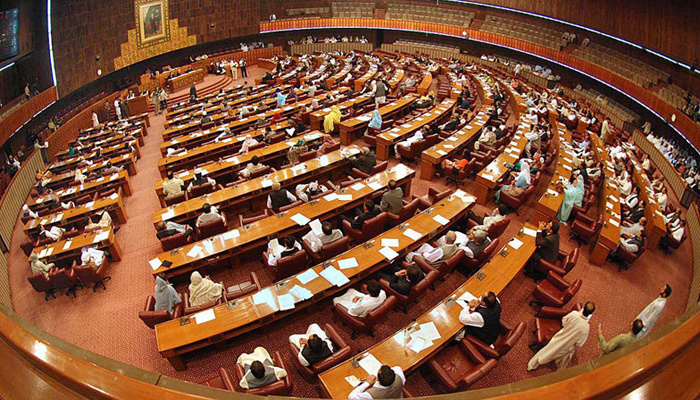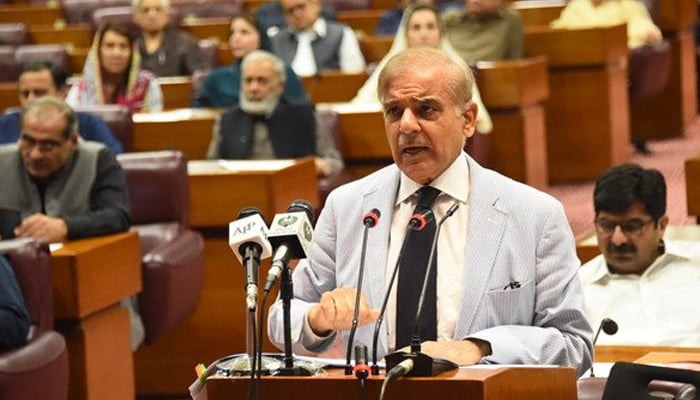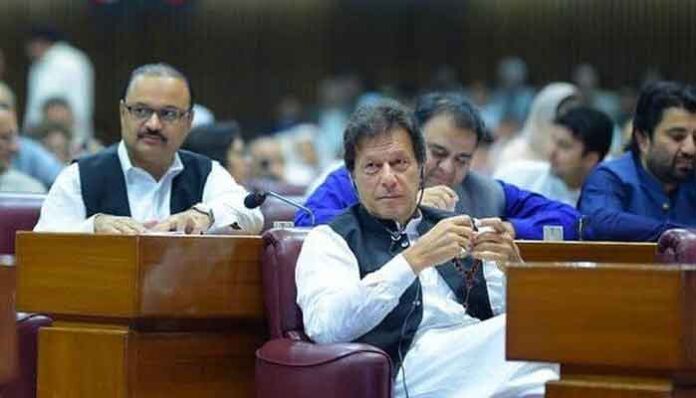ISLAMABAD: As the 15th National Assembly concluded its fourth parliamentary year on August 12, PTI Chairman and former prime Minister Imran Khan attended only one sitting (1.14%) of the National Assembly, according to a PILDAT analysis of the performance of the fourth parliamentary year, based on key performance indicators (KPIs).
Khan attended a total of 34 or 11% of sittings of the 15th National Assembly in his tenure as prime minister for three years and eight months, while Shehbaz Sharif, who took oath as prime minister on April 11, attended eight out of 43 sittings (19%).
Legislation
The PILDAT comparative analysis also looks at how the three years and eight months of the National Assembly under then-prime minister Khan were different from the same period in the 14th National Assembly.
According to the analysis of the conclusion of the fourth year of the National Assembly, the legislative activity witnessed a decrease of 8% in the fourth year of the 15th NA as it passed 55 bills compared to 60 bills passed during the third year of the assembly.
However, in a comparison of legislation between four years of the 15th and 14th National Assembly, the 15th National Assembly passed 155 bills in 4 years while the 14th National Assembly passed 125 bills in its first four years.
The 15th National Assembly has therefore passed 24% more bills in the same period compared to the previous assembly.
During the fourth year of the assembly, 32 government bills were introduced compared to 31 bills introduced in the third year while the private members introduced only 46 bills, which is a decline from the third year when 74 bills were introduced.
Ordinances
Excessive reliance on issuing ordinances has been witnessed during four years of the 15th National Assembly and 74 ordinances were laid down.
A slight decrease is seen in the number of ordinances laid down by the government in the National Assembly during its fourth year compared to the third year.

Sixteen ordinances were laid down in the assembly in the fourth year compared to 20 ordinances laid down in the third year, which is a decrease of about 20%.
Sessions
The 15th National Assembly of Pakistan met only for 87 days in the fourth parliamentary year. The assembly met for 10% more days than it was convened during its third year, which were 79 sittings.
However, on average, the 15th National Assembly met for 88 working days per year in its first four years in comparison with an average of 99 working days per year in the previous (14th) National Assembly.
This is an 11% decrease in the performance of the 15th National Assembly compared to the 14th National Assembly.
Regarding working hours, in its fourth year, the 15th National Assembly met for 178 hours and 1 minute.
This means that the working hours of the assembly declined by 18% from the third year of the assembly when it had convened for a total of 217 hours and 10 minutes.
The average working hours of the 15th National Assembly in four years are 258 hours and 15 minutes. Instead of improvement in performance and productivity, the 15th National Assembly worked for 12% fewer working hours compared to the previous (14th) National Assembly.
Attendance
The 15th National Assembly could not dispose of nearly 41% of planned agenda items in 87 sittings, which is a bulk of the agenda by any standard and on average, 58.87% of agenda items were left over in the sittings during the fourth year of the assembly.
During the fourth year, the average attendance of MNAs was recorded at 67% until April 9, 2022. After the PTI tenure, the average attendance of MNAs during the 4th year dropped to 51% which is 14% points lower than the attendance of MNAs during the third year, which was 65%.

The average attendance of MNAs in the first four years of the 15th National Assembly stands at 63%, an improvement of only 3 percentage points over the 60% average attendance of MNAs per year during the first 4 years of the 14th National Assembly.
Even after the resignations of PTI MNAs, the attendance was calculated on the basis of a full house, i.e. 342 MNAs as their resignations have not been accepted officially.
During the fourth year of the National Assembly, Khan attended only one sitting (1.14%) while he held the office of prime minister. He attended a total of 34 or 11% of sittings of the 15th National Assembly.
PM Shehbaz remained opposition leader till April 10, 2022, and in that capacity, attended 43% (19 out of 43) sittings of the assembly in its fourth year.
This was an improvement from his 13% attendance during the third year of the 15th National Assembly.
Raja Riaz Ahmad, who was declared opposition leader in the National Assembly on May 20, 2022, attended 35% (13 out of 37) sittings during the fourth year.
During the fourth year of the 15th National Assembly, the quorum was pointed out 34 times in 28 (32.18%) sittings out of 87 sittings. Out of these 28 sittings in which quorum was pointed out, 23 (26.44%) sittings were adjourned, even though on average, 173 MNAs were present in the fourth year.
Who was the most vocal?
During the tenure of the PTI government, Foreign Minister Bilawal Bhutto-Zardari was the most vocal MNA with a recorded talk time of 1 hour and 59 minutes.
Shehbaz, as opposition leader, spoke for 1 hour and 57 minutes, followed by Khawaja Asif who spoke for 1 hour and 27 minutes. Ahsan Iqbal spoke for 1 hour and 11 minutes, while Shazia Marri spoke for 51 minutes.
During this period in the House of 342 members, 174 (50.88% MNAs) did not speak for a single minute in the assembly and out of these 174 non-vocal MNAs, 149 were men and 25 women.
As many as 84 of these MNAs (22% of the House) belonged to the PTI, 48 to the PML-N and 23 to the PPPP.
The fourth year of the 15th National Assembly has seen just 14 days for the annual budget session and the passage of the Finance Bill 2022-2023, two days less than what was spent during the third year.
The 15th National Assembly has seen a sharp decrease (56%) of working hours from 102 hours and 27 minutes to 45 hours and seven minutes in the total time spent during the budget session during the fourth year.



